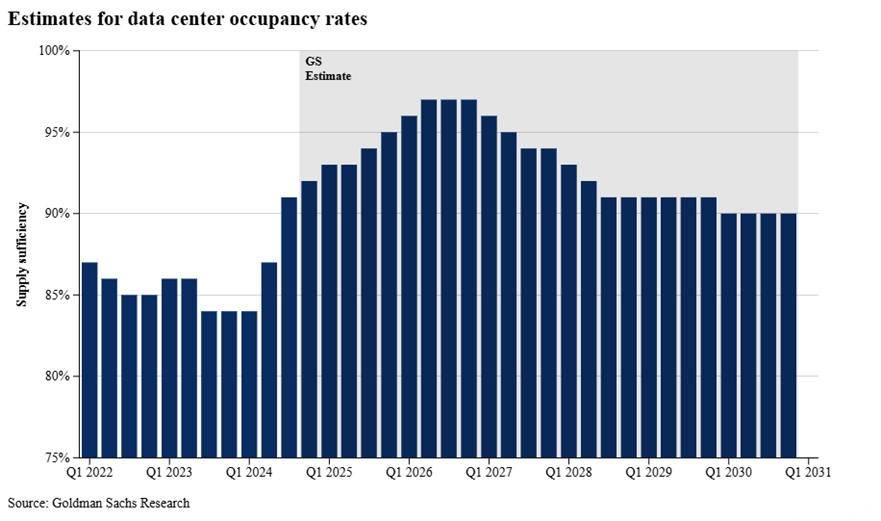Monthly Economic and Market Summary
Shutdown ends and volatility rises
| Monthly Return | Year-to- Date Return | 1-Year Return | |
|---|---|---|---|
| S&P 500 Large Cap | 0.25% | 17.79% | 14.97% |
| S&P Midcap | 2.04% | 7.40% | -0.25% |
| S&P Small Cap 600 | 2.65% | 6.05% | -2.40% |
| MSCI EAFE (Dev. Foreign) | 0.65% | 28.17% | 25.29% |
| MSCI Emerging Markets | -2.38% | 30.37% | 30.26% |
| Barclay’s 1-3 Year Gov’t Bonds | 0.47% | 4.83% | 5.06% |
| Barclay’s Gov’t Credit Bonds | 0.67% | 6.87% | 6.21% |
Market Return Data (as of 11/30): Bloomberg
-
Markets Climb Through Volatility—U.S. equities delivered a choppy, but ultimately positive performance in November. The S&P 500 recovered from a mid-month drawdown of more than 4.5% to record its seventh straight monthly gain. Performance was more board-based as investors rotated away from crowded momentum trades, largely represented by the Magnificent 7. Bond yields moved lower, which supported the rebound. Two-year and 10-year Treasury yields fell roughly 10 basis points and 7 basis points, respectively, as expectations for easing picked up again.
-
AI Scrutiny Intensifies—Investors grew more skeptical about the sustainability of AI related spending as questions increased around capital intensity, vendor financing and long-term returns. OpenAI’s large investment commitments drew attention, while Google’s Gemini 3 launch and its tensor processing unit (TPU) advancements added competitive pressure on NVIDIA. This renewed scrutiny contributed to sharp declines across AI related stocks and several notable intraday reversals.
-
Delayed September Jobs Report—The report followed a labor market data gap that began in early September and continued through the record 44-day government shutdown. Nonfarm payrolls increased by 119,000 in September, rebounding from 4,000 jobs lost in August following a downward revision. The unemployment rate rose to 4.4%, the highest level since October 2021.
-
Gold Climbs Higher While Dollar Softens— Gold rose more than 5% in November, supported by falling real yields and growing demand for hedges amid elevated policy uncertainty. The dollar index slipped 0.3% after a strong October, which reduced pressure on global assets and commodities.
-
Fed Expectations Whipsaw—Markets navigated significant swings in rate expectations throughout November. Early in the month, Federal Reserve Chair Powell pushed back on the idea of near-term easing, which sent the probability of a December federal funds rate cut below 30%. Later in the month, expectations reversed following dovish comments from New York Fed President Williams and markets ended November pricing a probability for a December cut above 80%.
Earnings expectations: What’s ahead for 2026?
S&P 500 companies delivered a stronger-than-expected earnings season in Q3 2025, marking the fourth consecutive quarter of double-digit earnings growth. Positive results were fueled by resilient consumer spending, increased technology spending and ongoing demand for AI infrastructure. The outlook for Q4 and 2026 remains positive, though the pace of growth may moderate.
The chart below shows S&P 500 earnings are expected to grow more than 11% in 2025 and nearly 13% in 2026. Magnificent 7 names may see earnings growth decelerate slightly, following several momentous quarters and earnings across the other 493 S&P names may begin to broaden out, contributing to overall earnings growth. While earnings growth is expected to continue its upward trajectory, projections may be optimistic with growth hinging on tech spending, easing fiscal policy and provisions from The One Big Beautiful Bill Act (OBBBA).
AI related capital investment remains a major theme heading into 2026, with many companies reporting substantial backlogs and robust spending plans. The market anticipates the capital investment will drive future earnings growth over time, but investors question whether the spending is sustainable. OBBBA provisions relating to research & development (R&D), capital expenditures and bonus depreciation may serve as tailwinds for free-cash-flow for R&D and capital-intensive industries. Consumer industries may also benefit from a boost in consumption from tax refunds, though this may be offset by tariff-related costs impacting already-slim margins.
Heading into a dynamic market environment in 2026, it’s important that investors remain focused on corporate earnings. Earnings help provide direct insights and guidance to a company’s overall financial health and performance.


Investment, Securities and Insurance Products:
NOT
FDIC INSUREDNOT BANK
GUARANTEEDMAY
LOSE VALUENOT INSURED BY ANY
FEDERAL AGENCYNOT A
DEPOSITAssociated Bank and Associated Bank Private Wealth are marketing names AB-C uses for products and services offered by its affiliates. Securities and investment advisory services are offered by Associated Investment Services, Inc. (AIS), member FINRA/SIPC; insurance products are offered by licensed agents of AIS; deposit and loan products and services are offered through Associated Bank, N.A. (ABNA); investment management, fiduciary, administrative and planning services are offered through Associated Trust Company, N.A. (ATC); and Kellogg Asset Management, LLC® (KAM) provides investment management services to AB-C affiliates. AIS, ABNA, ATC, and KAM are all direct or indirect, wholly-owned subsidiaries of AB-C. AB-C and its affiliates do not provide tax, legal or accounting advice. Please consult with your advisors regarding your individual situation. (1024)
Readers should not consider this update of the economic and investment environment as analysis upon which to make investment decisions or recommendations of strategies or particular securities. Always consider whether particular investments are appropriate for your situation and consult with your financial advisor regarding the appropriateness of any recommendation to your investment objective. Past performance is no guarantee of future returns. Read the prospectus before investing; it contains information about a mutual fund’s risks, investment objectives, fees and expenses. You may obtain a prospectus for any mutual fund from your financial advisor or directly from the mutual fund company you choose.

